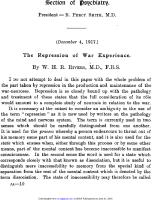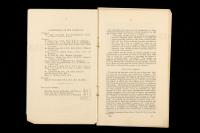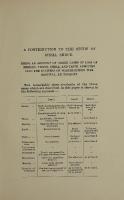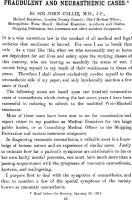Clinical Records of Shell-shock
Dublin Core
Title
Clinical Records of Shell-shock
Subject
Mental health
Description
The controversial term shell-shock was initially coined by Charles Myers in 1915, cribbed from the lexicon of soldiers, but by 1922, the term which the War Office Committee references most often is war neurasthenia, or simply neurasthenia. In 1980, the American Psychological Association would add Post-Traumatic Stress Disorder (PTSD) to the third edition of the Diagnostic and Statistical Manual of Mental Disorders. Like PTSD, shell-shock describes a traumatic event, but unlike shell-shock, PTSD references traumatic contexts beyond combat and war: the two terms are not equivalent, nor are their historical contexts contiguous.
This collection organizes materials on the legal and medical context of the diagnosis.
This collection organizes materials on the legal and medical context of the diagnosis.
Collection Items
The Repression of War Experience
In this speech, given in front of the Royal Society of Medicine, Rivers explains the process of being shell-shocked as repression, a means of obscuring mental content from memory and rendering memory inaccessible. However, when trauma was…
Report of the War Office Committee of Enquiry into "Shell-Shock"
In June of 1922, the War Officer Committee of Enquiry published their report on shell-shock and its treatment during the Great War. In 1922, the term which the War Office Committee references most often is war neurasthenia, or simply neurasthenia.…
A contribution to the study of shell shock : being an account of three cases of loss of memory, vision, smell, and taste, admitted into the Duchess of Westminster's War Hospital, Le Touquet
Shell-shock did not exist as a documented category of disability until February 1915, when psychologist Charles Myers published a paper in The Lancet entitled “A Contribution To The Study of Shell Shock: Being An Account of Three Cases of Loss of…



